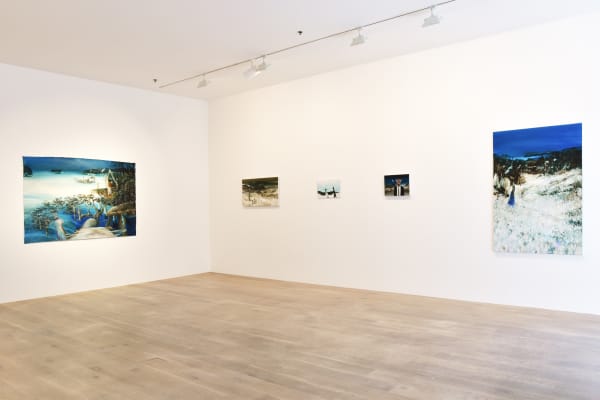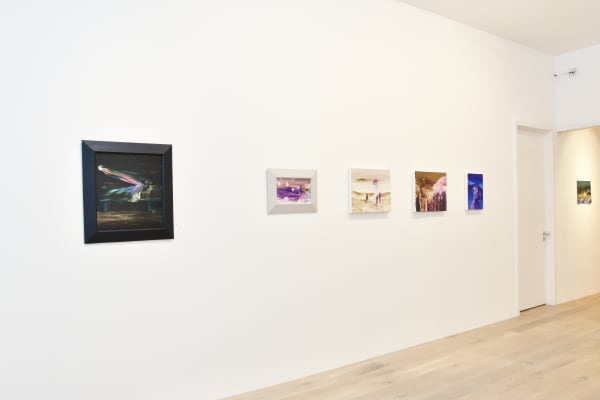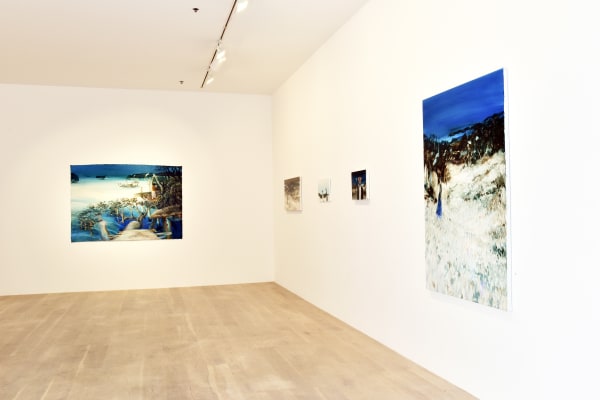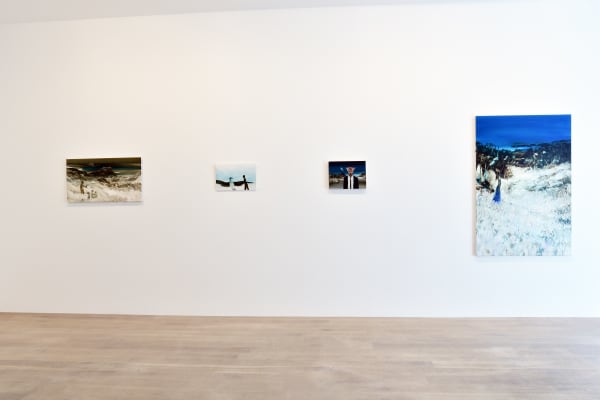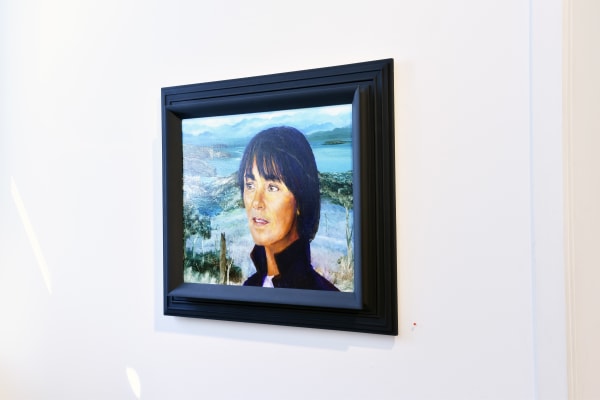John Walsh
In John Walsh’s recent body of works, we are transported to a realm in which spirits and humans co-exist. Time and space overlap as contemporary beings mix with ethereal suggestions of what might lay beyond. With mixed Aitanga a Hauiti and New Zealand Irish Heritage, Walsh’s ancestors voyaged across oceans on their immense journey to Aotearoa. The navigation of the Pacific was a profound feat, through which Walsh finds inspiration for how we might navigate the future. He writes of the “evolving culture that had to be patient, resourceful, inventive, prepared to drop truths and beliefs… embracing a measured love, fear, respect and exhilaration of venturing into the uncertain.”
In the painting Wharewaka, the centre-point of the exhibition, early voyagers have settled into a newfound land. The landscape, in smoky teals, is of another time, it holds a sense of mystery, and yet is compellingly familiar. Light shines down onto an expanse of water populated by vessels. These are people as at home on the sea as on land. A translation of the title Wharewaka is House of Ships, where the impression of the landscape is one of a good harbour, with resources for building, replenishing and trading. In the painting First Star, a figure gazes towards the horizon. There is a softness to where she stands, which flows down towards a wild, natural forest caught in the wind, and ultimately out to sea and the lone star above. The first star shines a guiding light, again evoking early navigation techniques.
Drawing upon Maori mythology and early navigation, Walsh’s landscapes are alluring. They are fluid and suggestive, not focusing on specific sites, instead capturing a sense of place and the crossing of times which are open to the viewer’s interpretation.

